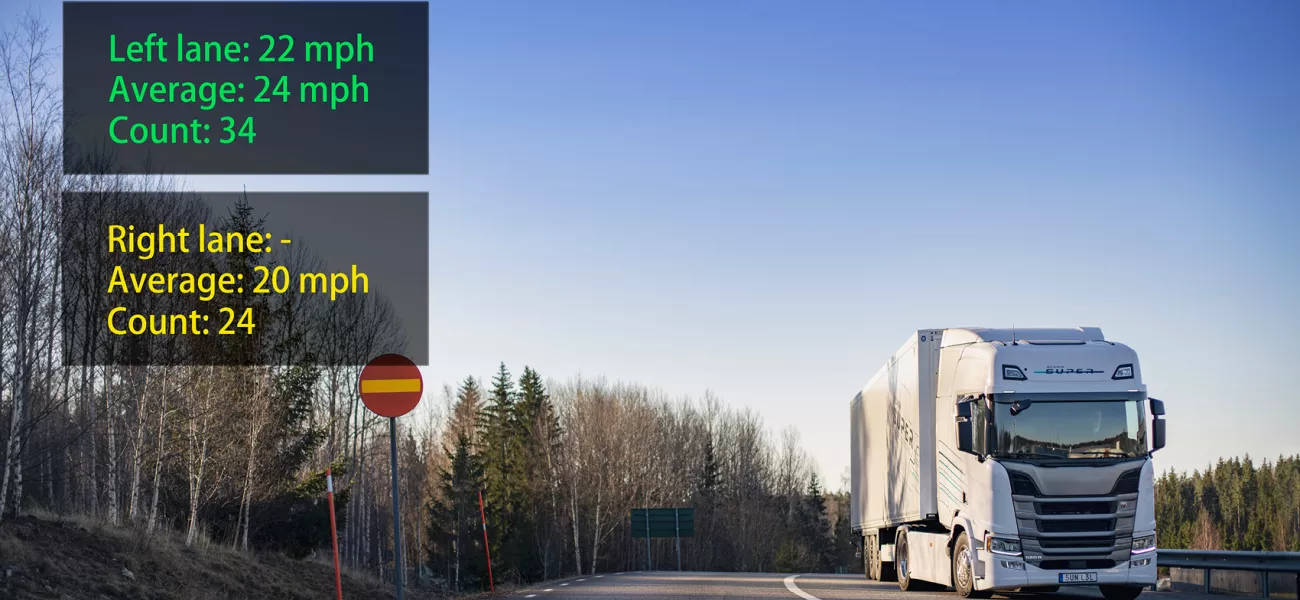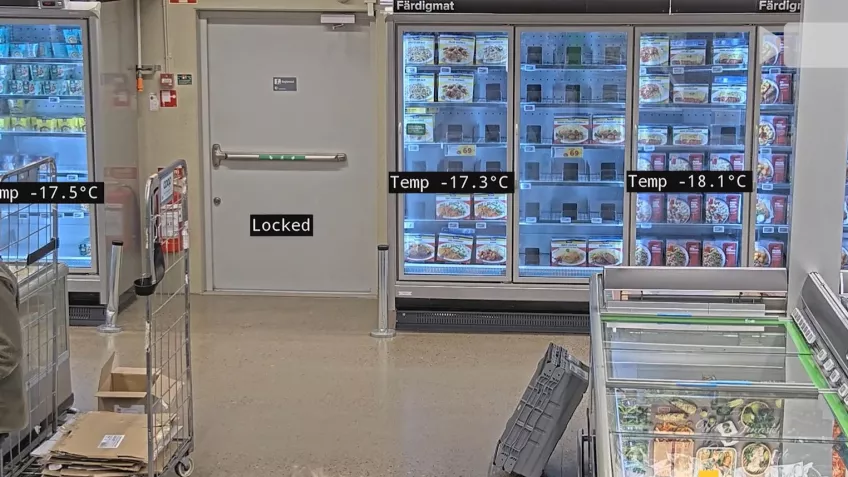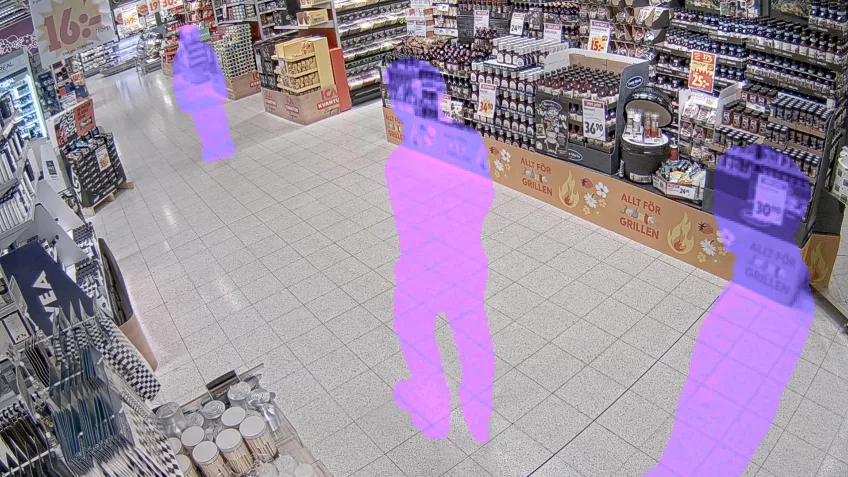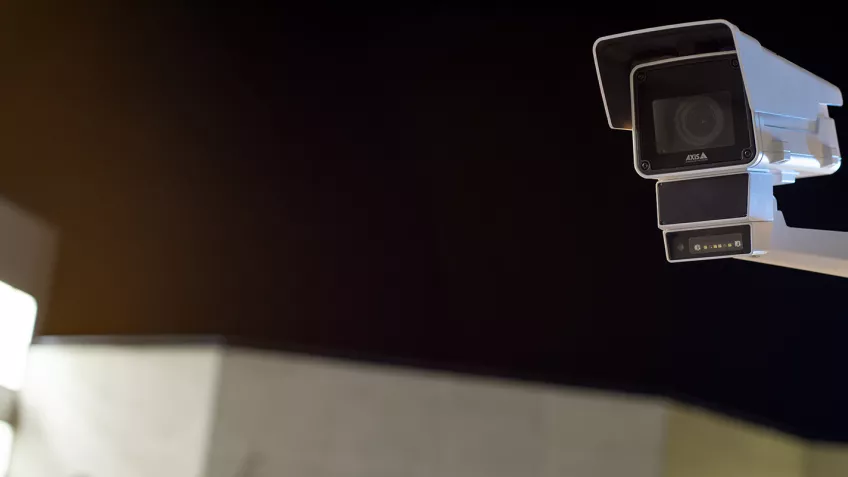
Discussions around augmented reality (AR) can conjure up futuristic, almost science fiction-like scenarios, but many may not realize that it’s already possible to tap into the benefits of AR in video surveillance.
In broad terms, AR can be defined as the ability to overlay text, images, and other information onto a live scene or video to provide additional insight to the user or operator. This cutting-edge technology enriches video stream with key information about devices or objects in the field-of-view. In doing so, it opens up new possibilities in safety and surveillance. Here we explore just a few of the AR applications and features enhancing Axis video surveillance technology today.
Maximizing AR in wide-area coverage
Where a single camera has pan, tilt, and zoom capabilities, it allows for both wide-area coverage and granular detail. Given the broad area PTZ cameras cover, they can inherently capture a number of sensors in place across the wide field of view, from temperature gauges to door sensors. By adding live overlays of sensor data, organizations can maximize the business benefits of their video surveillance system.
With our latest AXIS OS and a Z-Wave™ capable PTZ camera, such as the AXIS M5000-G PTZ Camera, end users can easily configure camera-position-aware overlays to show data values wirelessly received from sensors in the field of view. For example, a manufacturer can use this capability to monitor the temperature of freezers, with the temperature data showing on the live video feed. If a freezer becomes too warm due to a fault, the camera will automatically pan towards it and an alert can be sent – enabling the manufacturer to identify and fix the issue quickly.
Each annotation-overlay is linked to a sensor to render the correct value for added observability.

Additionally, the overlay can be configured to be visible only when the camera is pointing in a specific direction and zoomed in. In retail, for instance, operators can use the video feed alone to see if a cabinet is closed or open, but not if it is locked or unlocked. By integrating sensors and adding that information to the video feed, operators can also confirm whether a door is locked without needing to disturb retail staff when they are busy dealing with customers. Similarly, if the operator receives an alarm flagging that a cabinet has been unlocked, they can check the video to see if someone is breaking into it or if staff have opened it to make a sale. If it is the latter, the operator can dismiss the alarm. Combining sensor data with the video feed through AR offers a more efficient way to check security measures.
Annotation overlays such as these are very easy to configure using the built-in configuration interface.
Augmented reality in action
You might be using AR in your surveillance system already without realizing it – through security features that involve real-time overlay. Some well-established examples of AR in action include stream information overlay, street names, and simple text related to the field-of-view.
One o the more enhanced – and widespread – AR uses is enabling the real-time rendered privacy masks required in certain settings due to legislation like the EU General Data Protection Regulation (GDPR). With applications like AXIS Live Privacy Shield, remotely monitoring activities while also safeguarding privacy is made easy.
AXIS Live Privacy Shield is a versatile, edge-based application. It enables compatible cameras to dynamically mask humans, faces, or the background in real-time – in both live and recorded video. With this, cameras can use AI-based masking in locations where you need to safeguard privacy while monitoring activity. This is particularly useful in settings where privacy and safety efforts are crucial, such as manufacturing facilities, hospitals, elderly care homes, hotels, schools, offices, and stores.

The added value of integrated technology
As the IoT mindset moves into a business-first approach, more organizations are considering what important measurements or data can be collected from a field-of-view to enhance operations and improve business outcomes. For instance, if the status of doors and security-related equipment can be fed directly into a video feed, it will save time by avoiding the need for the operator to take the additional step of verifying their status in a different system. This speeds up processes while simultaneously improving security.
Combining augmentation overlays with existing integrated surveillance solutions can create new efficiencies for many businesses. For example, to monitor activity on roads, AXIS Speed Monitor seamlessly connects Axis security radar to your visual camera, displaying the metadata, such as vehicle speeds, collected by radar on top of the video stream. With this integration, you can monitor unsecure roads in real-time.
Taking the integrated approach allows you to add value and increase the functionality of your camera – making it easier to identify speeding vehicles, monitor loading docks and other work facilities where vehicles are required, and make informed decisions for improving worker safety.
Similarly, AXIS Q1656-DLE Radar-Video Fusion Camera also combines radar and video. While video analytics provide precise localization and object classification, radar analytics add information such as distance, speed measurement and movement characteristics of objects. The fused technologies enable a clear link between measurements and target objects, with AR ensuring the operator can take in both the visual image and clear data from the field-of-view.
Ultimately, with AR technology, organizations can benefit from improved scene intelligence combined with the forensic value of video.

Future proofing your AR capabilities
In reality, most of the sensors which can be linked to surveillance to display data on a video feed are not wireless. In many cases, more flexibility is needed. However, thanks to new features in AXIS OS, integrators can use the well-known MQTT protocol to add any type of sensor input to the view.
The MQTT protocol is open, easy to integrate with a wide variety of sensors, and can output the readings in a very simple text format. This opens up a whole realm of new AR possibilities.
Each Axis camera has an embedded MQTT receiver/subscriber that can be configured to receive MQTT data from an external MQTT broker. Enabling MQTT-overlays is configured and managed through the new VAPIX-API. This set of APIs can provide video and audio streams from Axis network products such as PTZ, fixed box and thermal cameras.
Once configured, the camera can then automatically generate overlay to display content using these real-time messages received from the sensors.
Through using open standards and well-proven IoT protocols, integrators can move quickly to integrate information from new sensors into the video display. The open nature of the protocol means that you can integrate your current sensors, while also keeping your options open for future integrations as more sensors are added to your system or emerge on the market.
Creating a smarter, safer world
Many industries can benefit from AR technology in video surveillance. From manufacturing to retail to city-wide surveillance, augmented overlay can enrich existing video stream in many different ways, whether that be privacy masks or object classifications and measurements like vehicle speed. The possibilities for laying advanced graphics and data over a video stream are endless, as are the potential end user benefits.
At Axis, we’re committed to continued innovation in this space – working with our partners in our Axis Developer Community to turbocharge the AR use cases brought to market. These new capabilities are increasing the value of video management software. By monitoring multiple systems and unifying different events, you can lower costs, improve efficiency and ultimately, make the world an even smarter, safer place.
The open nature of our video surveillance technology offers countless possibilities for customers considering AR applications. It’s exciting to be at the frontier of this ever-evolving technology.